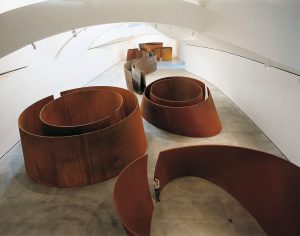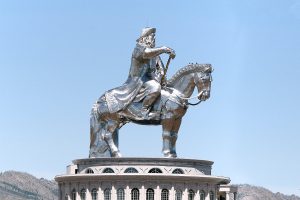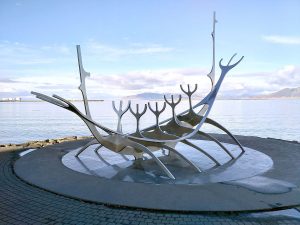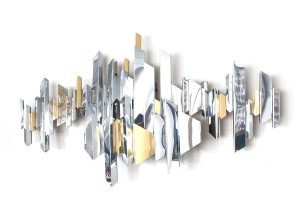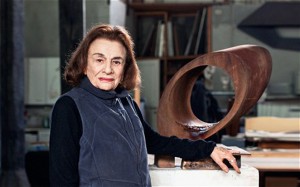An overview of three families of works by Catalan sculptor Jaume Plensa, b.1955
JAUME PLENSA – “Poetry can seriously damage your health”
Content in grams of an adult male weighing 70kg.
| Water | 41,400 | Mg | 21 |
| Fat | 12,600 | Cl | 85 |
| Proteins | 12,600 | P | 670 |
| Carbohydrates | 300 | S | 112 |
| Na | 63 | Fe | 3 |
| K | 150 | I | 0.014 |
| Ca | 1,160 |
Barcelona 1996
Jaume Plensa, Sombras y Textos 1990-2007, Galaxia Gutenberg – Circulo de Lectores, 2008, p.39.
Barcelona has been a city that during the 20th century served as the operational base of many internationally acclaimed artists like Picasso, Gaudí, Dalí, Miró or Tàpies to name a few of the most famous.
Jaume Plensa (Barcelona, 1955) refers to them as his family, his friends. He was raised under their influence and nowadays he is considered one the most internationally recognised Spanish, or Catalan, artists of his time.
He describes himself as a classical artist interested in the sound and texture of materials, the human body, the face, the language. As a kid of his time he likes to utilise the latest technology to express his ideas. He often talks about pairs of concepts like letters and languages, individuals and societies, body and soul, light and darkness. It appears that some of his preoccupations are shared with those of Antony Gormley. What’s the relationship of the human being and the transcendental, with that world of energy and ideas? More interested in posing questions than offering answers, defends that the curious attitude is the engine of progress and development. The beginning of the creative process.
Plensa’s work can be organised in families of pieces around a common topic. Human heads, letters of different alphabets that come from his love of poetry, or huddled human figures protecting themselves from the environment that he then places in both the urban and the natural landscape.
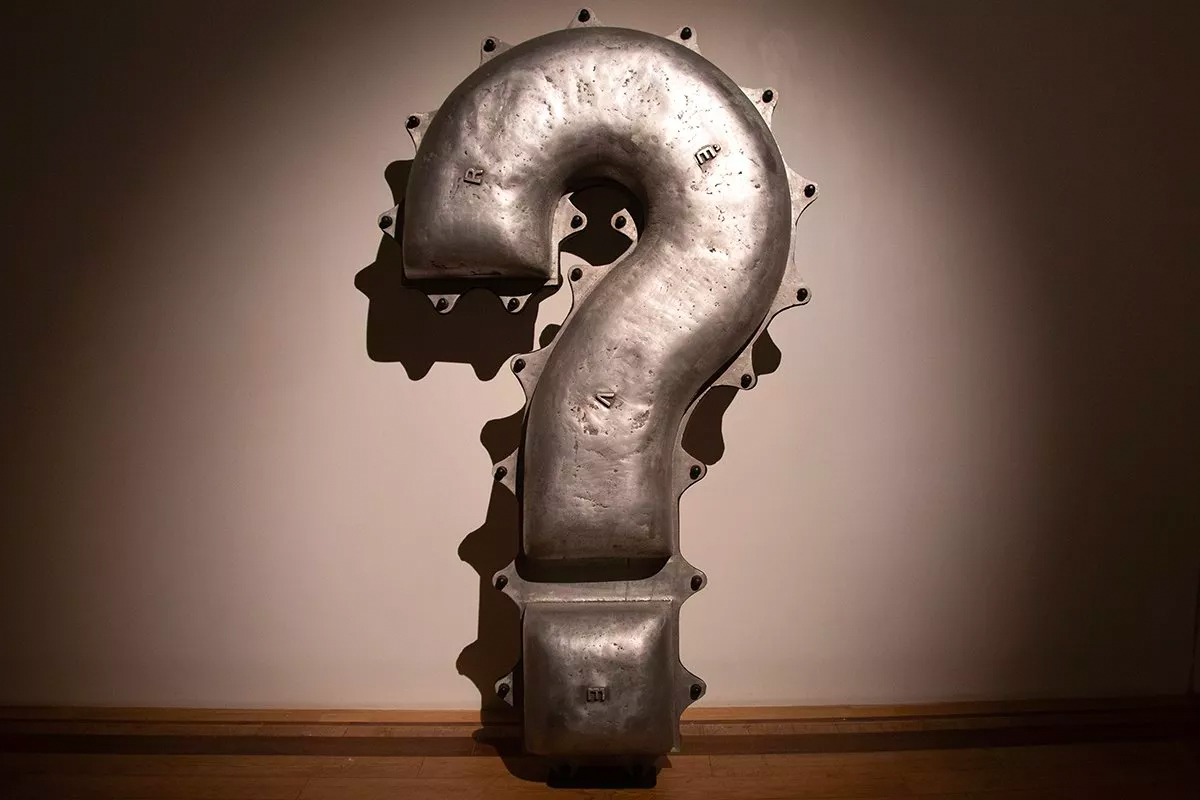
Jaume Plensa, Florence II, 1992. This 2m tall question mark made of steel and aluminium with the word RÊVE – meaning “dream” in french – engraved. It could be understood as a representation of the artist’s question about how to sculpt a dream.
Bringing the landscape inside the sculptures – The wire heads
“Nuria and Irma” represent the heads of two girls, whom he probably met at some point. They seem to be between eleven and fourteen years old, an age when they are no longer girls but they are not yet women. They face each other establishing a kind of dialogue. They are made of a beautifully executed stainless steel wire mesh and have their eyes closed, alluding to that introspection moment that also Gormley looks for in his work.
Different shades of grey draw the lines that make the sculptures appear in front of us. He says that this transparency allows him to bring the surrounding landscape inside the sculptures and let the people see the shape of a head from the inside.
The wires seem to become rays of light and this way one could say that he’s used technology in a reverse way, he has given a physical dimension to a hologram. After observing part of his work it is fair to say that he seems to want to bring to the physical world those manipulations that computer software allows him to explore.
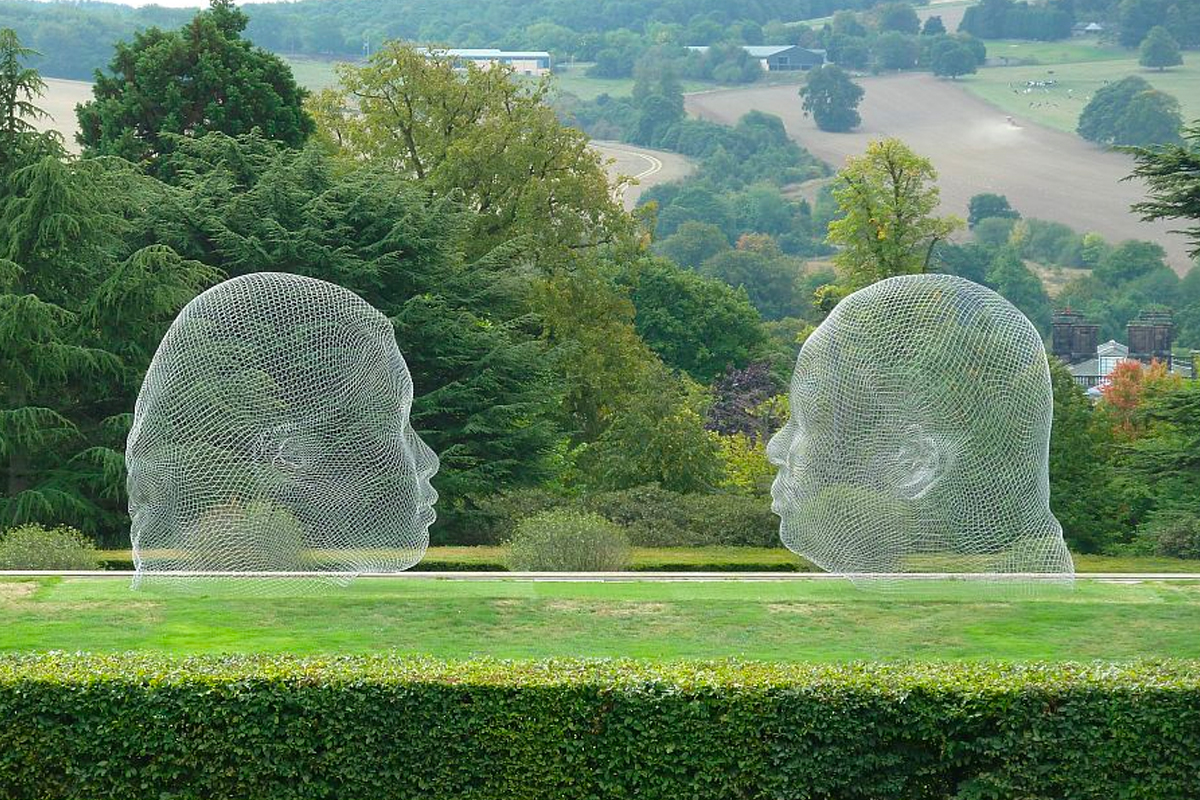
Jaume Plensa, Nuria (2007) and Irma (2010) in stainless steel wire mesh at Yorkshire sculpture park. By putting the two facing each other with eyes closed, the artist refers to the internal dialogue of each and the relationship with the surrounding landscape.
An evolution of this work, three times bigger this time, can be seen at the entrance of a skyscraper in Calgary. “Wonderland” is twelve meters tall and by means of increasing the size of the sculpture, he establishes a balanced relationship between the piece and the buildings around. This also permits him to define openings either side of it through which people can enter and experience the space enclosed by the mesh.
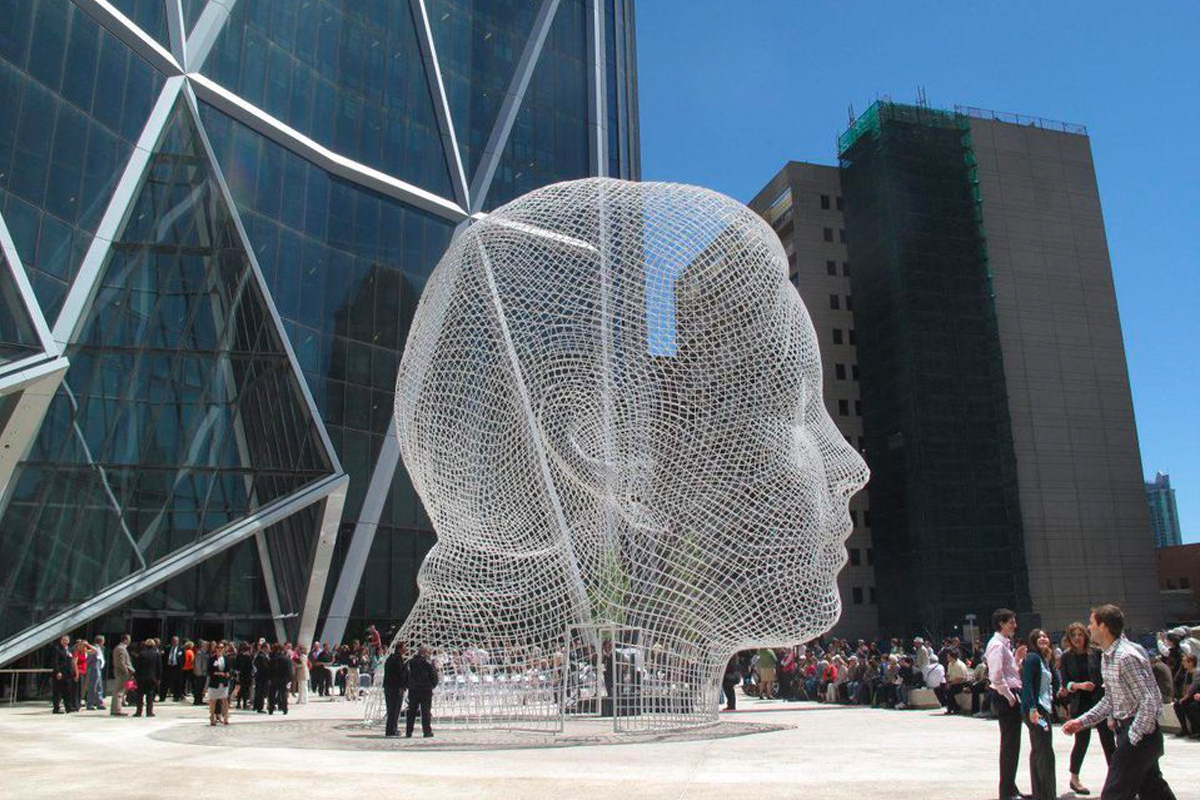
Wonderland, Calgary (2012). The sculpture made of white painted stainless steel receives visitors to the building behind. The two openings on either side allow people to pass inside and through it. Photo Galerie Lelong.
Discovering different cultures through letters and languages
Plensa’s father was an avid reader and the little Jaume grew up in a household full of books. He recalls being curious about the back of the letters, that side that’s always hidden to us because letters are usually two-dimensional.
Letters, like people, mean little or nothing by themselves. But when they join together they form words, words form sentences, sentences form texts and so on. One can trace the same associations with human beings, groups, cities, countries… For Plensa, a language and its calligraphy is a great tool to understand a culture and its people.
I haven’t travelled the world as extensively as Plensa has, but I agree with him that all cultures have more things in common than things that separate us. We all share similar concerns and want similar things. We want to relate to others, to belong to groups, we want our families to be happy and healthy…
“Spiegel I and II” are born of the combination of this love for texts, cultures and people. Letters of different languages are combined indistinctly to shape two human bodies curling up and facing each other. The scene has an atmosphere of intimacy in the middle of a vast open space, to the point that one feels like interrupting a private encounter.
The figures don’t have faces, preserving their anonymity. Being four meters high one can enter the enclosed space and observe the hidden side of the letters, the one the artist was always curious to see.
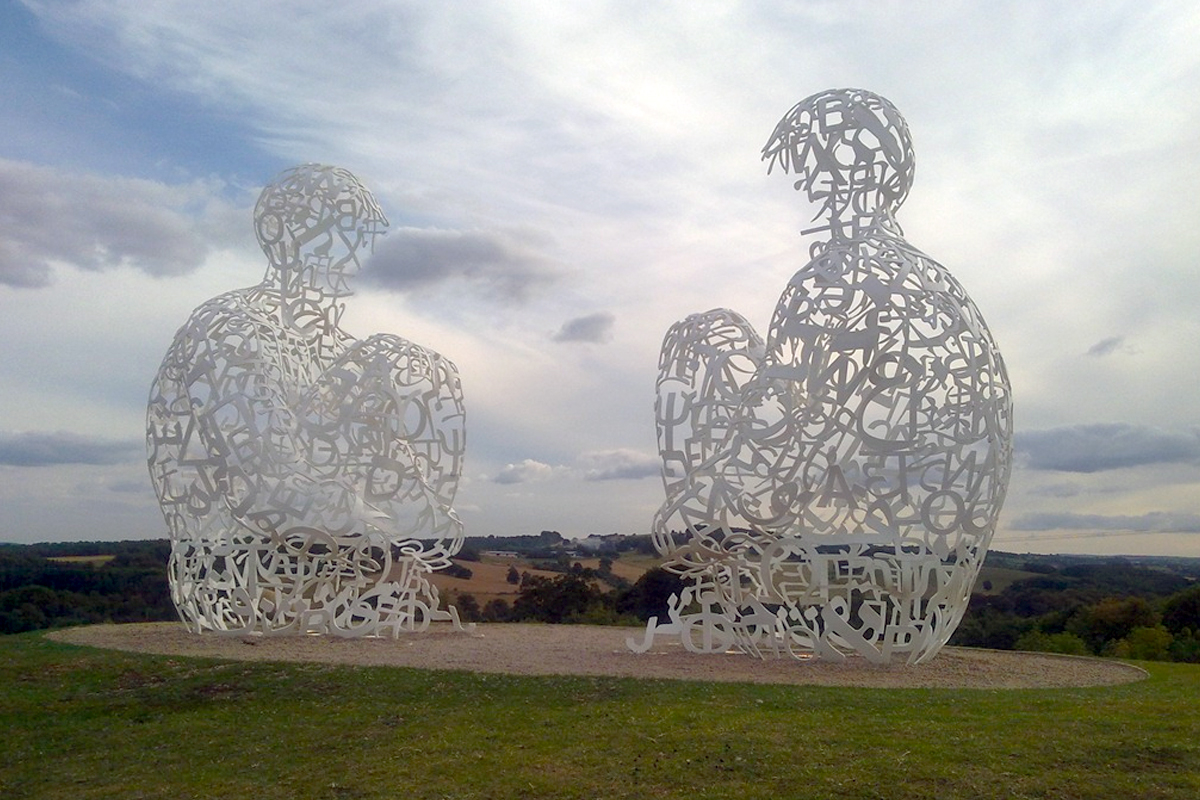
Jaume Plensa, Spiegel I&II (2010) at Yorkshire Sculpture Park, 2011. The steel sculptures facing each other establish their own dialogue leaving the visitor with the impression of witnessing a private encounter. Photograph by Down by the Dougie.
“Alma del Ebro” on the other hand presents just one figure and turns the focal point to the interaction of the sculpture with the people approaching it. This was the first time I experienced Plensa’s work in real life. I was impressed by the twelve meters high sculpture, there is something magical about scaled up human shapes.
It was built as a commemoration of the Expo 2008 held in Zaragoza about water and sustainable development. Probably, as a tribute to its home country, Plensa decided to reconstruct this body using only white painted steel letters from the latin alphabet. According to the artist the figure “is looking inwards more than outwards” and “the intention is precisely to invite the visitor to share this introspective moment”.

Jaume Plensa, Alma del Ebro, Zaragoza (2008). The 11 m high sculpture traces the pass of time on the floor with its changing shadows. It invites the people to enter the space enclosed and reflect about themselves.
The use of light as a sculpting material: Chicago and Sestriere.
Plensa has also explored the use of light in some of his works in both the landscape and the urban environment.
Crown Fountain in Chicago is probably the work that put him in the spotlight of the international art scene. Plensa won the competition organised by Lester Crown and his design was chosen over proposals by Maya Lin and Robert Venturi.
His idea has proved to be a great success. Not only as a work of art, but also as a public space that citizens love to use. Children gather in groups waiting for the next water jet to emanate from the face projected on the screen. This interaction between art and audience is what the sculptor is most proud of.
It comprises two fifty feet tall towers made of very transparent glass blocks placed seventy meters apart. They display faces of a thousand anonymous people of Chicago that change every few seconds. In between towers there is a very thin sheet of water over a black stone pavement which Chicagoans enjoy as if it were a beach during the scorching summer days.
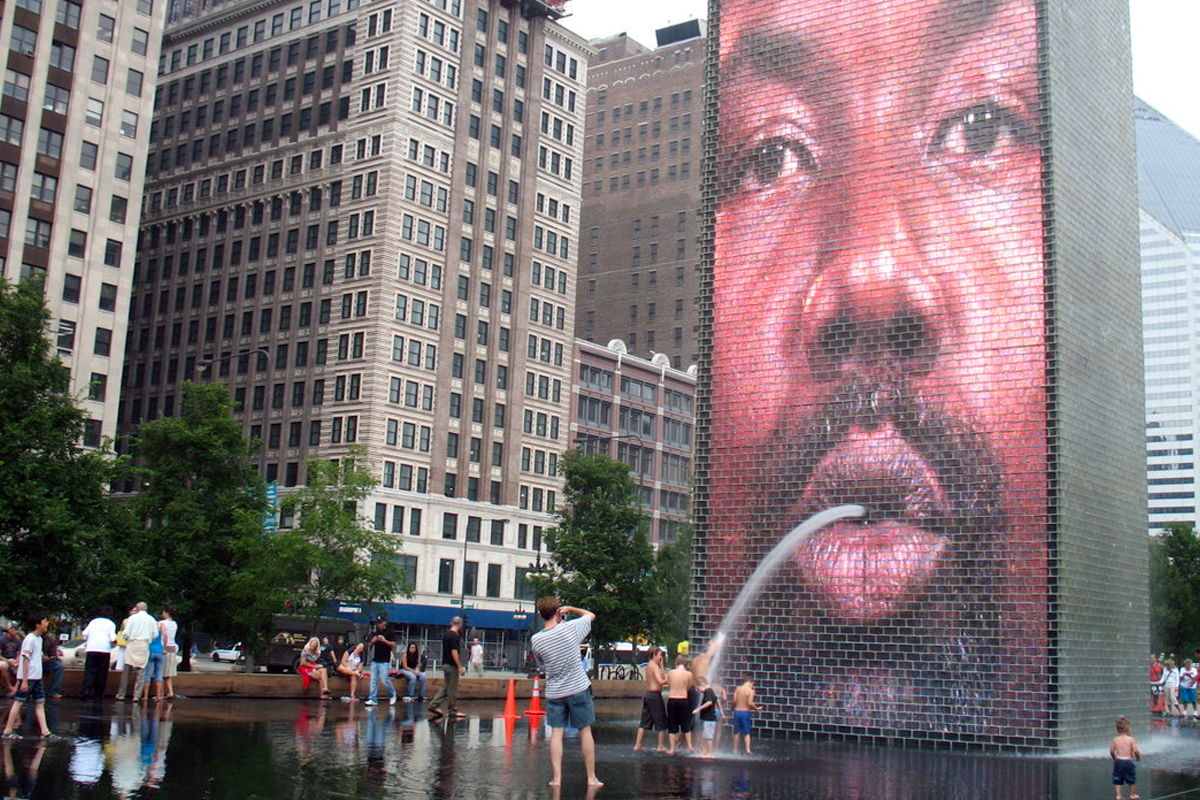
Jaume Plensa, Crown Fountain, Chicago (2004). Two towers made of glass blocks display images of anonymous people that discontinuously throw a water jet. Here Plensa reflects on the role of public fountains and the interaction of art and audience.
In 2006, as a commemoration of the Winter Olympic Games in Torino, a series of artists and architects teamed up in pairs to explore issues related to art and architectural research using ephemeral materials like snow.
Jaume Plensa and Foster + Partners’ response was a 20m diameter and 50 cm tall circle engraved in the snow. It showed the GPS coordinates of Foster’s studio in London, Plensa’s studio in Barcelona and the location of the piece in Sestriere.
It was an artistic installation that combined the precision of a contemporary tool with the poetry of the white landscape of the Alps. The snow started melting a few days after the work had been finished. All that remains is a handful of photographs as a testimony of the collaboration between the artist and the architects in a certain place at a certain time; and a reminder that, in the end, all things man made are essentially temporary.
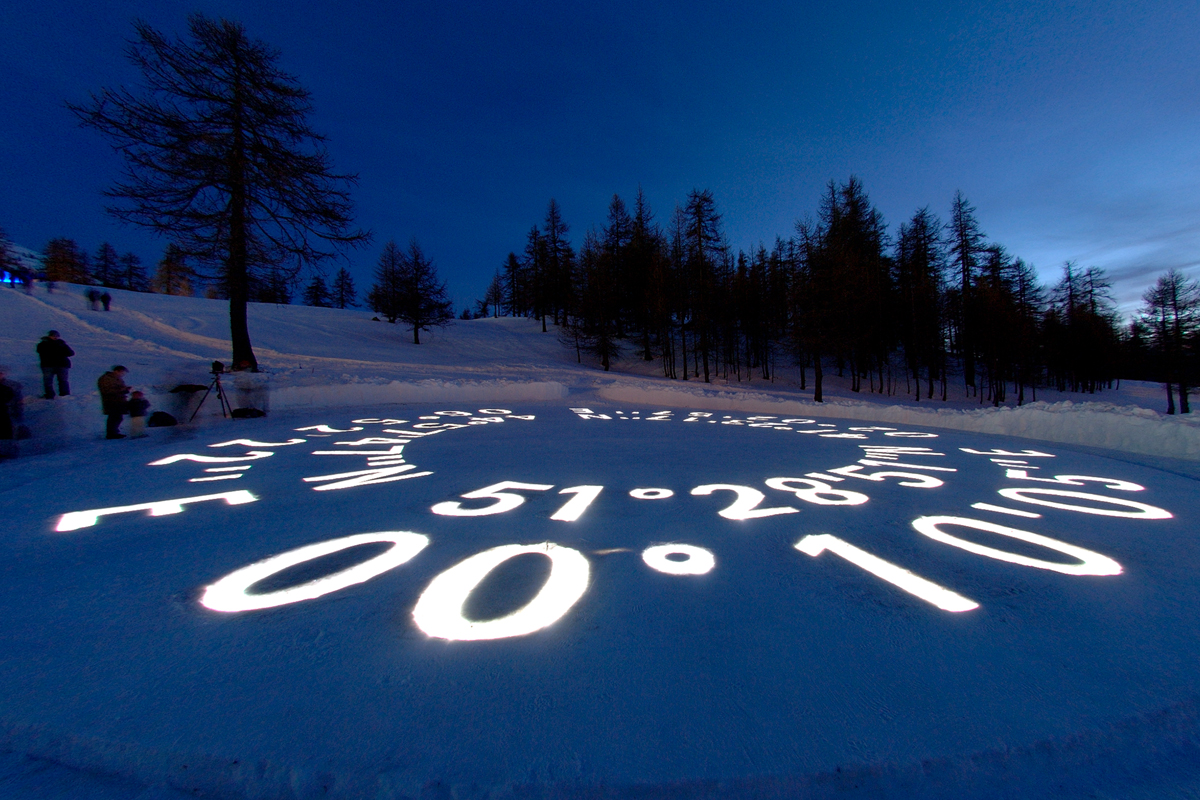
The snow show (Sestriere, 2006). Three GPS locations engraved in the snow forming a circle to commemorate the Winter Olympics in 2006: the location of this point in Sestriere together with that of Plensa’s studio in Barcelona and Foster + Partners’ studio in London.

